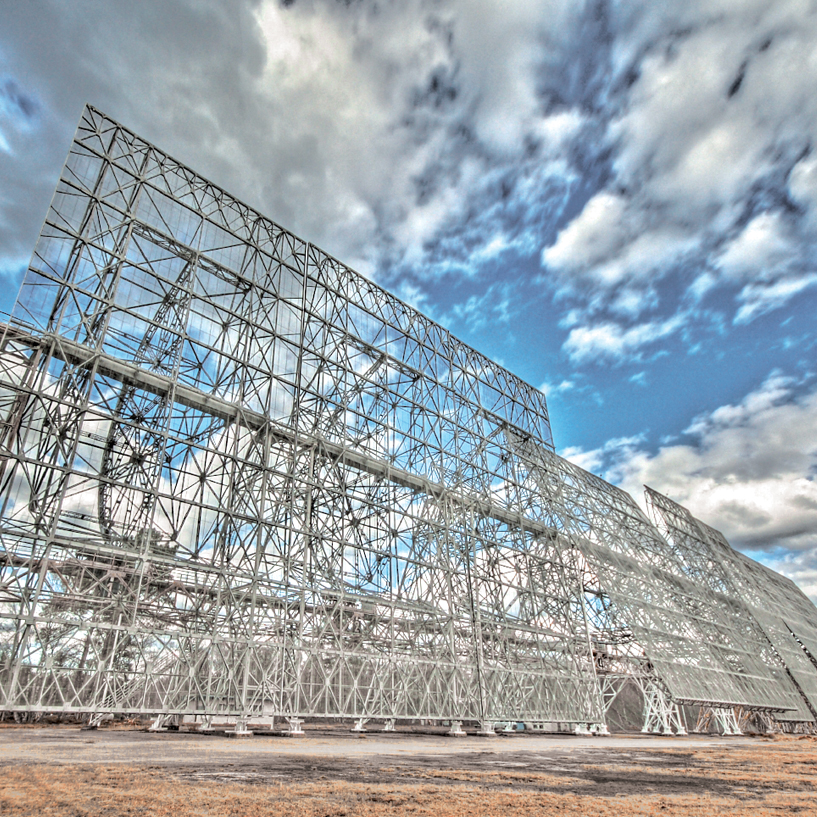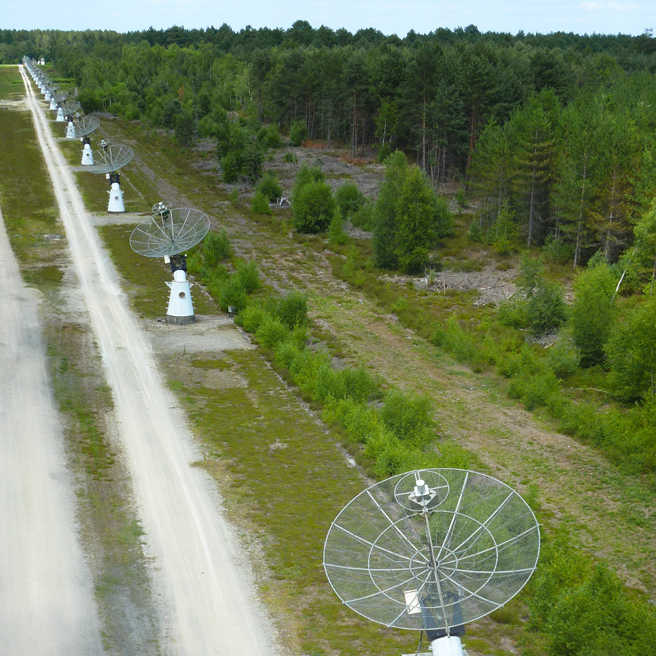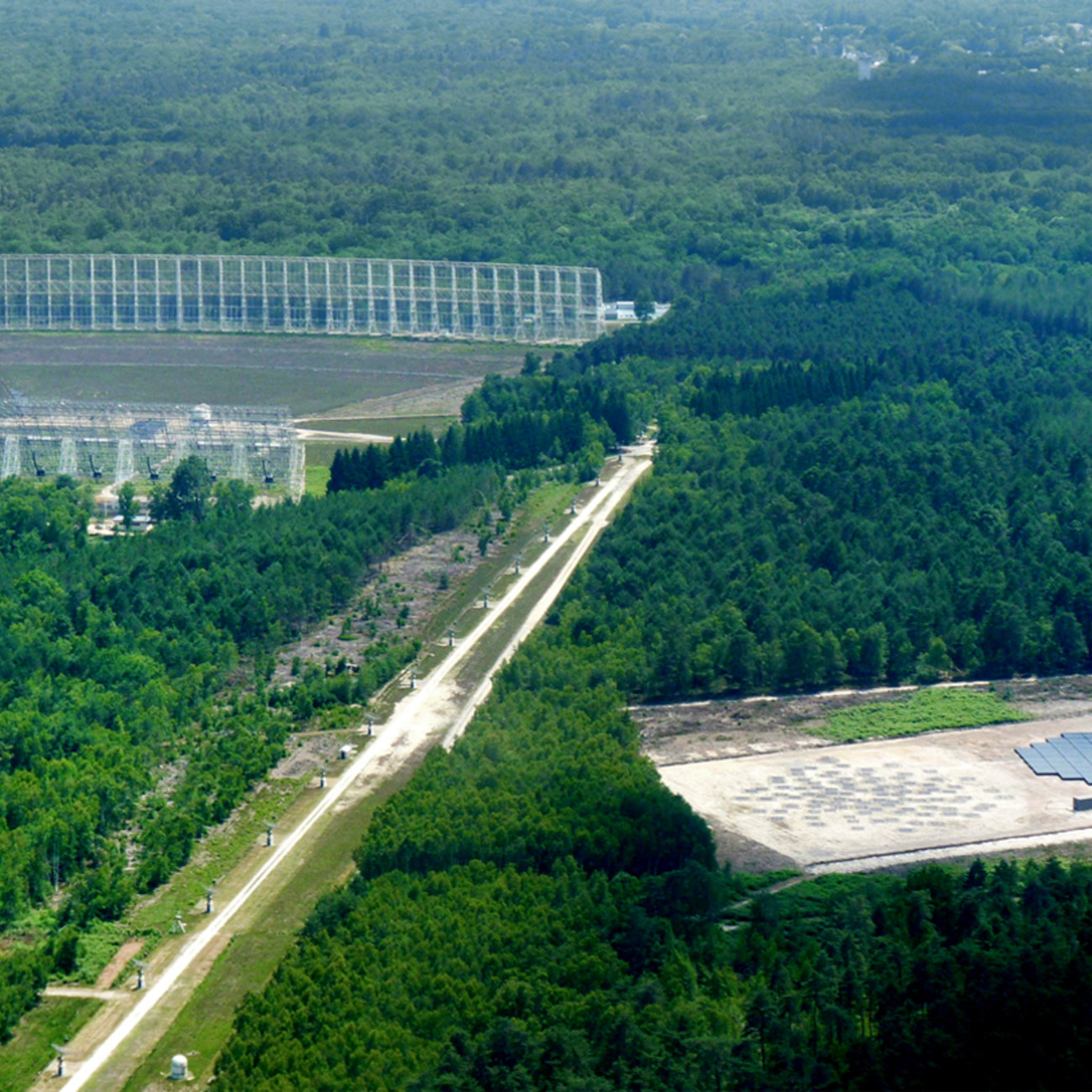The Nançay radio-astronomical observatory is installed in the heart of the Sologne woods in north central France so it is sheltered from parasitic radio noise. This observing site is also a unique instrument laboratory. Created in 1953, it is of great importance for the development of international radio-astronomy. Discover its instruments, which, day and night, scrutinize the Sun, comets, pulsars and other outstanding objects …

The large radio-telescope
This is the fourth largest radio-telescope in the world. It has a spherical main mirror, a flat orientable mirror and a central unit, the focal cart that carries receivers and analyzes the celestial signals. With an 8,000-square-metre (86,400-square-foot) collecting surface, it was inaugurated in 1967 to observe, in particular, interstellar hydrogen gas. It can be used to study galaxies, stellar atmospheres and comets, and also to time pulsars.
- Four mirrors
- Fourth largest in the world
- 1000-3500 MHz

LOFAR
A last generation interferometre, LOFAR (LOwFrequencyARray) is an array of 50,000 antennas, deployed in groups in Europe over distances varying from 100 metres to 1000 kilometres (620 miles). The French LOFAR station, installed at Nançay since 2011, is made up of 1,632 antennas. LOFAR is used to observe a wide variety of celestial phenomena.
- 1,632 antennas
- 50,000 antennas in Europe
- 30-80 MHz / 110-250 MHz

NenuFAR
A large phased array composed of 1,824 antennas (60,000 square metres) that can work autonomously or as part of the European network LOFAR. Since 2015, NenuFAR (New extension in Nançay upgrading LOFAR) is able to study the evolution of the Universe several million years after the Big Bang, the formation of galaxies and clusters of galaxies, the Sun, planets and exo-planets.
- 1,824 antennas
- 10-90 MHz

Radioheliograph
This is an interferometre for the daily surveillance of the Sun. It is composed of 47 parabolic antennas covering an area in the form of a T, spread over 2.4 km in the north-south direction and 3.2 km in the east-west direction. Each antenna is motorized so it is able to follow a celestial object for up to seven uninterrupted hours. Some 200 radio images are taken per second. This instrument has evolved considerably since its inauguration in 1956.
- 47 antennas
- 150-400 MHz

The decametric array
This is a phased array made up of 144 helicoidal/conical nine-metre-high antennas installed over 7,000 square metres. It is designed to study the very intense radio emission of energetic electrons in the solar corona and the ionized magnetic environment of Jupiter. This array has been in operation since 1977.
- 144 antennas
- 10-100 MHz

ORFEES
This is a radiospectrograph equipped with an orientable parabolic antenna. Since 2013, it has been used daily for the surveillance of solar activity and, in particular, its coronal eruptions. ORFEES (Observation en Radio Fréquences pour l’Etude des Eruptions Solaires) is dedicated to the study of space meteorology.
- 1 antenna
- 130-1000 MHz

CODALEMA
CODALEMA (COsmic ray Detection Array with Logarithmic ElectroMagnetic Antennas) is a group of instruments (10 antennas and 57 stand-alone stations) established in 2003. It is dedicated to observing the very high energy cosmic rays produced by violent phenomena in the Universe.
- 10 antennas
- 57 stand-alone stations
- 20-200 MHz

EMBRACE
This is a technological prototype, the first of its kind, designed in 2010 in preparation for the giant international radio-telescope SKA (Square Kilometre Array), to be installed in Australia and South Africa and to operate in the period 2020-2023. Spread over 64m² under a “radome,” EMBRACE (Electronic Multi-Beam Radio-Astronomy ConcEpt) is a multibeam system with which it will be possible to observe two distinct regions of the sky simultaneously.
- 4608 antennas
- 900-1500 MHz

Surveillance antenna
This is a 22-metre-high platform, made up of a metallic mast on top of which are installed two antennas. Higher than the surrounding vegetation, they have been used since 1990 to identify the parasitic radio signals that can perturb astronomical observation. They are essential for the maintenance of the radio quality of the site.
- Two antennas
- 100-3500 MHz

The Würzburg antennas
The first large instruments for French radio-astronomy were made up of German radars recycled after the end of the war. Two of these Würzburg antennas (7.5 m diametre) were installed at Nançay in 1957 with an equatorial mounting on mobile carts in order to be able to function as an interferometre. These pioneering instruments opened the way to new interferometres or to other kinds of giant radio-telescopes. Only one of these is still at Nançay, since the other was donated to the Mémorial de Caen.
- Two antennas
- 1400 MHz

Centimetre Interferometre
This interferometre is composed of 16 1.1m diametre antennas mounted on a long rail. The direction of the rail is such that one can observe the Sun for 45 uninterrupted minutes every day. It has been used since 1958 to record solar activity at a wavelength of 3.2 centimetre, thus furnishing a useful complement to the other instruments on the site.
- 16 antennas
- 9,4 MHz

Micro-electronics
The micro-electronics laboratory makes the chips that carry 13 million components on an area of 1 square millitmetres. Different kinds of circuits are designed: low-noise amplifiers, filters, mixers, dephasers and relays destined for installation on the advanced instruments at the observatory and on the giant international radio-telescopes such as SKA.
- 13 million components on 1 mm²


